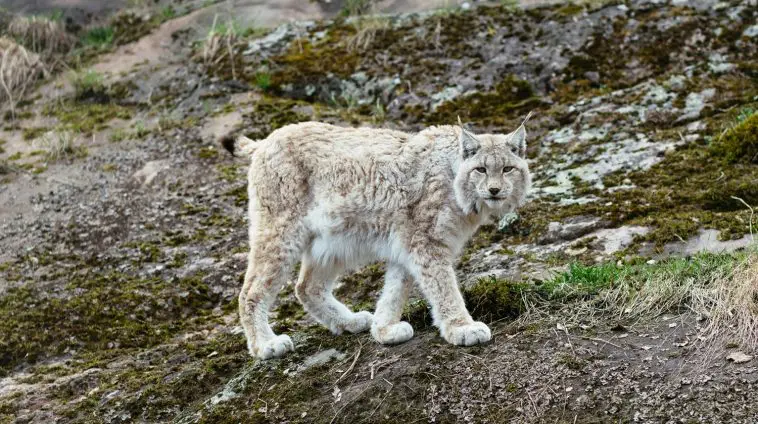The lynx has always been one of my favorite wild cats, living in the cold northern forest where no other cat could survive. I remember one animal documentary that showed a Canada lynx chasing a snowshoe hare over deep snow. The cat and the hare were evenly matched as they raced over the snow. The lynx was gaining on its prey, but with a quick turn on the hare’s part, it was able to escape. I remember being disappointed in the outcome, feeling sorry for this hungry feline.
There are two lynx species that inhabit the northern forest of the world, the Canada lynx and the Eurasian lynx.
The Canada Lynx
This wild cat is found throughout the vast boreal forests of Canada and Alaska. The Canada lynx is slightly larger than its cousin, the bobcat, standing at 19–22 inches at the shoulder with a weight of 18–24 lbs. God has equipped this northern cat with a thick fur coat and extremely large furred paws to help it travel through thick snow. Although these northern forests support red squirrels, voles, and spruce grouse, the Canada lynx’s major prey is the snowshoe hare. In fact, every ten years the snowshoe hare’s numbers will crash, and when the hare population goes down so does the lynx population.
This cat’s hunting technique is similar to most other cats: stalking its intended victim to as close as it can and then making a fast dash and pouncing. If it is forced to chase this fast hare it will give up within 25 yards if the attempt is unsuccessful. The snowshoe hare also has large feet like the Canada lynx, but being lighter in weight can skim over deep snow better than the cat chasing it.
Mating occurs in the fall with 2–3 kittens coming in spring. The den usually is under a tree base or an outcropping of rocks.
The Eurasian Lynx
This variety of lynx is larger than its North American cousin. Standing at 26 inches at the shoulders with the males weighing 50–60 lbs and the females 25–40 lbs. This is the largest cat in Europe, and its range is all of the Scandinavian countries, the forest areas in Eastern Europe, and the northern forest of Asia.
Like its North American counterpart, this cat prefers old-growth timber but is adaptable enough to live on mountainsides and other rocky areas as long as this habitat provides enough brush and trees to give this cat cover to stalk its prey.
Being a larger cat than the Canada lynx enables the Eurasian lynx to take larger prey. Deer is included in its diet, as well as hares, rabbits, ground-nesting birds, squirrels, and mice. The fawns of the maral (Asia’s elk) are taken when available.
This lynx hunts by stalking its potential prey and then pouncing on it in one or two bounds. The lynx’s eyesight is excellent, having the ability to see a mouse at 250 feet, a hare at 1000 feet, and a deer at 1,600 feet.
Mating takes place in the fall and 2–3 kittens are born in the spring. The young grow fast and soon are large enough to start hunting with their mother. These young cats have much to learn and watch their mother carefully as she teaches them how to stalk and kill prey. The young depart in the fall to stake out their own territories.
The cold northern forests of North America, Europe, and Asia are cold and harsh places to live, but God created this cat with large furred feet to travel in deep snow and a warm fur coat to handle the low temperatures. God gave the lynx what it needed to thrive in the habitat of the northern forest.
Have you not known? Have you not heard? The Lord is the everlasting God, the Creator of the ends of the earth. Isaiah 40:28a






